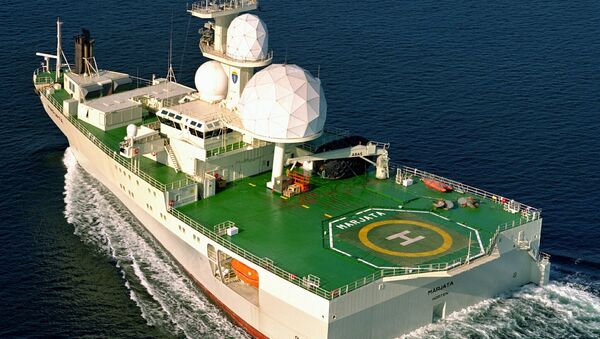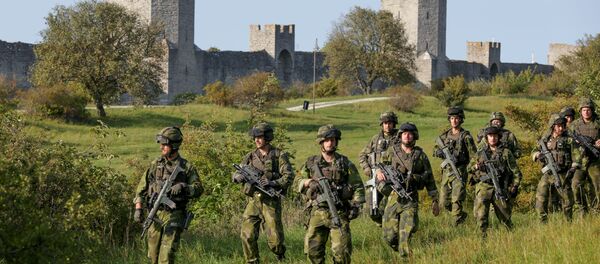In a few months, the FS Marjata will therefore keep company with the ship it was originally supposed to replace, which has been renamed the FS Eger after receiving a full overhaul and becoming modernized. Both reconnaissance ships are heading to neutral waters in the Norwegian Sea and the Barents Sea, but will be tasked with monitoring Russian activity exclusively.
"Norway's role as a monitor in the North, also on behalf of NATO, is becoming increasingly evident. This strengthens Norway's part and guarantees that our allies will come to our assistance in the event of a conflict. Intelligence is political capital," Norwegian newspaper Aftenposten's commentator Per Anders Madsen wrote.
#Marjata visiting #Bodø today #etterretning #intelligence pic.twitter.com/hH8IxtIxA6
— Helge Lyngmoe (@lyngmoe) 4 мая 2016 г.
According to Lieutenant General Morten Haga Lunde, the chief of the Norwegian Intelligence Service (NIS), the FS Eger will be tasked with following activity on the surface, such as civil and military transport, including activity in the air and underwater. The FS Marjata, which has a far greater capacity than its predecessor, will patrol in the eastern part of the Barents Sea and possibly keep an eye on Russian military bases on the Kola Peninsula. The FS Eger will be based in Harstad, while the FS Marjata's home base will be Kirkenes.
"It's like buying a new computer. There is a generation difference here," Morten Haga Lunde told Norwegian newspaper Aftenposten.
According to Haga Lunde, both ships will be used for as long as possible in a hybrid war, yet will be withdrawn in the event of a real war.
The FS Marjata is the fourth spy ship of its kind. Its predecessors have been operated by the Norwegian Intelligence Service since the days of the Cold War. The fourth model of the reconnaissance ship is 126 meters (413 feet) long and 23.5 meters (77 feet) wide.
Norway's new intelligence vessel "Marjata" made first port call to #Kirkenes today. Ready for #Barents Sea voyages. pic.twitter.com/qZmmB05WRD
— Thomas Nilsen (@NilsenThomas) 23 мая 2016 г.
Earlier this year, a classified government analysis identified Russian warships and fighters as potential targets for the Norwegian fleet of F-35s.





